In Part 1, I talked about Huawei’s “All Intelligence” Strategy, which was the big topic at Huawei Connect 2023 in Shanghai. It is a large but natural upgrade to their current enterprise offering of integrated, end-to-end digital transformation services. But now, instead of just digitizing enterprises, it’s also about making them intelligent.
A key take-away from Part 1 was that Huawei is well positioned as a key provider of foundational technology for intelligence. They provide the technologies (hardware, software and increasingly AI) that others build with and upon. However, I skipped over the actual tech stack they are providing for building intelligence capabilities. This was covered quite well in the keynote by David Wang (President of Enterprise). And that is the topic for this article. The short version is:
- Huawei’s AI Tech Stack = Pangu + Hardware + Partnerships / Ecosystems
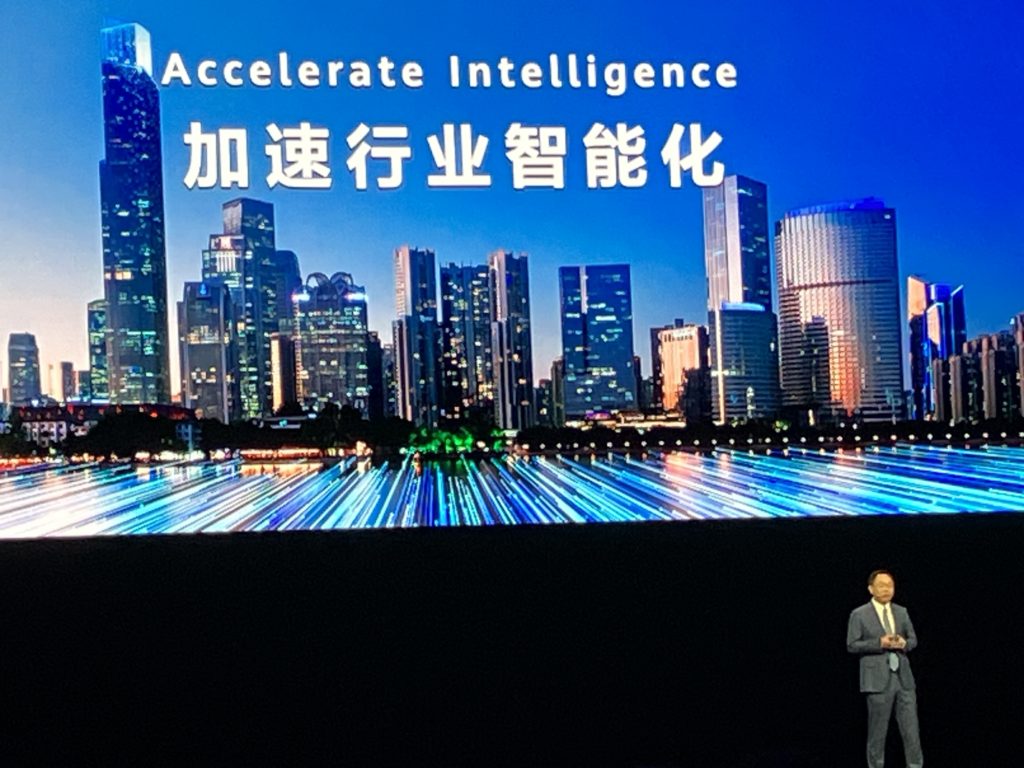
Four Challenges to Implementing AI Capabilities
President of Enterprise David Wang (see above photo) gave a really good talk on enterprises building intelligence capabilities. The short version is:
- +50% of all operating systems will have intelligence eventually. That’s the opportunity for businesses.
- But there are lots of challenges to get there. That’s the problem. He noted 4 specific problems when upgrading to intelligence business capabilities and systems.

That slide is a bit fuzzy (sorry). The four challenges mentioned are:
Challenge 1: Data
AI requires lots and lots of industry-specific data to be collected on an on-going basis. For training, prediction, and re-training. This is going to be a big challenge. This means creating a data architecture that is constantly moving data around.
This also means gathering lots of unstructured data from the real world. That is very different than running ERP systems with nice spreadsheets. We are talking about visual information. Information from radar and lots of types of sensors. Huawei calls this type of data requirement “intelligent perception”.
Data for AI also requires a different type of sharing and collaboration. Huawei calls this “intelligent connectivity”. Lots of devices and sources are going to be interacting and collaborating on data sharing, slicing, aggregation and storage. HarmonyOS, which was originally built for IoT and cross-platform collaboration, is probably a good foundation of this type of collaboration.
Challenge 2: Computing power
AI takes a huge amount of computing power. This is going to be a big ongoing challenge. Huawei calls this “intelligent computing”, which is a bit different. AI computing requires specialized, flexible, and cloud-based computing.
Challenge 3: Algorithms
Current mostly small AI models are being replaced by large language and other generative AI models (e.g., GPT and LLaMA). But that is just the beginning. We will also need industry-specific models.
Challenge 4: Application deployment
Finally, these foundation and industry-specific models will enable lots of apps and tools, which will need to be integrated into workflows. This is going to be a big mostly human effort that will take a long time. Consultants are going to have a good decade.
Those are the four main challenges. And it’s a good list.
And Huawei is trying to solve all these problems for enterprises. Their goal is to offer foundational technologies and services that enable businesses to build intelligence capabilities. Hence the conference title of “Accelerate Intelligence”.
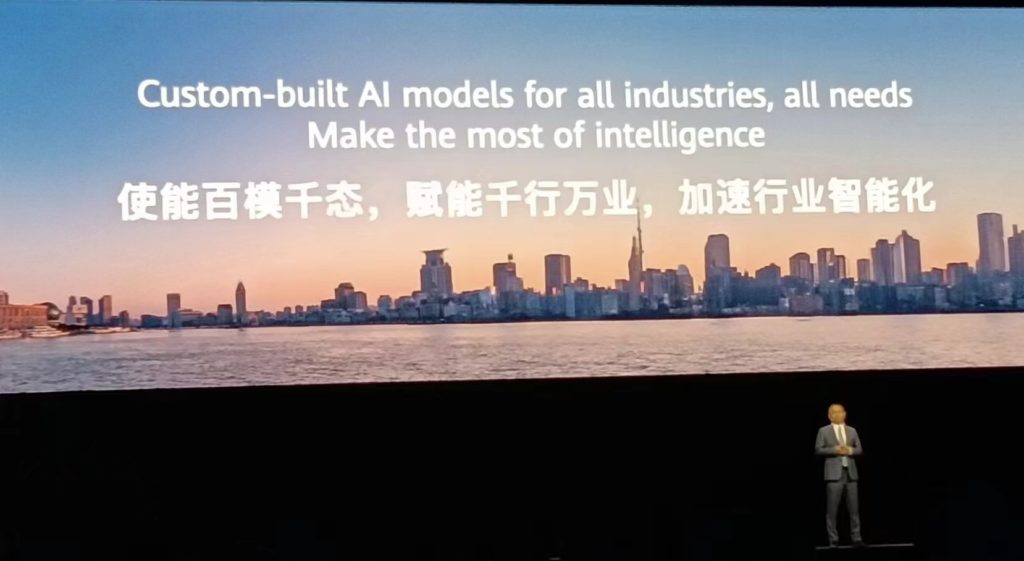
Huawei’s AI Tech Stack Begins with Hardware and AI Foundation Models
Huawei released their white paper that outlined their tech architecture. You can find it online. But note the below objective of “custom-built AI models for all industries, all needs”. That is pretty sweeping. They are going for the foundational technology for all business.

That paper is pretty dense. Fortunately, I found some really good summary slides presented by Li Wei, Director of Huawei Cloud El Services. These are complicated but worth going through in detail.

First, note the role of Huawei’s Pangu in the AI Foundation Models layer (L0).
Pangu already has NLP (natural language processing), multimodal, CV, Prediction and Scientific Computing models. This layer has the big powerful generative AI models that everything will be built on. The major tech companies are all trying to play at this layer. OpenAI has GPT and Dall-E (and others). Baidu has PaddlePaddle and others. Google has LLaMA. Even Chinese IFlytek has Spark.
Second, note the Ascend AI cloud service (hardware, data centers, etc.) at the bottom. This is the mentioned big computing power required.
In the below slide, you can see how there are computing needs at every stage of AI model development and usage. Keep in mind, Huawei is historically a hardware and equipment company, with tremendous research and manufacturing capabilities. They don’t just provide cloud services (like AWS). They also build data centers, sell servers and so on. Huawei Cloud and its data centers are now showing up all over Asia.

In his keynote, David Wang spoke specifically about Huawei’s new Ascend Atlas 900 SuperCluster. This is the latest in their Ascend series, but it is fine tuned for training large language models.

I think these two levels (foundation models and computing power) are the core of what Huawei is currently offering. There is also the data layer in between, which will have a lot to do with sensing and edge computing. And creating a data architecture for gathering, standardizing, and sharing data.
However, keep in mind, Huawei positions itself as foundational digital infrastructure for intelligence. That means they support non-Huawei models such as PaddlePaddle, TensorFlow and others. You can see this below in David’s slide. That is an important part of the value proposition.

The Next Levels of the AI Tech Stack Are Industry-Specific Models. That Means Partnerships and Ecosystems.
The mentioned hardware, cloud platforms and AI foundation models are what enable more specific models to be built. And this will mostly be done by others. Think partnerships and ecosystems. It begins with level L1 Industry-Specific Models. And then level L2 Scenario-Specific Models. See below.

These L1 and L2 capabilities require partnerships, ecosystems and working with lots and lots of clients. Not just in China but globally. Most large clients and partners will ultimately need to build their own data capabilities, models, and applications for their core operations. You can see how Huawei offers ModelArts, a model development platform.
In practice, businesses are going to have to do three things:
- Data engineering
- Model development
- Application development
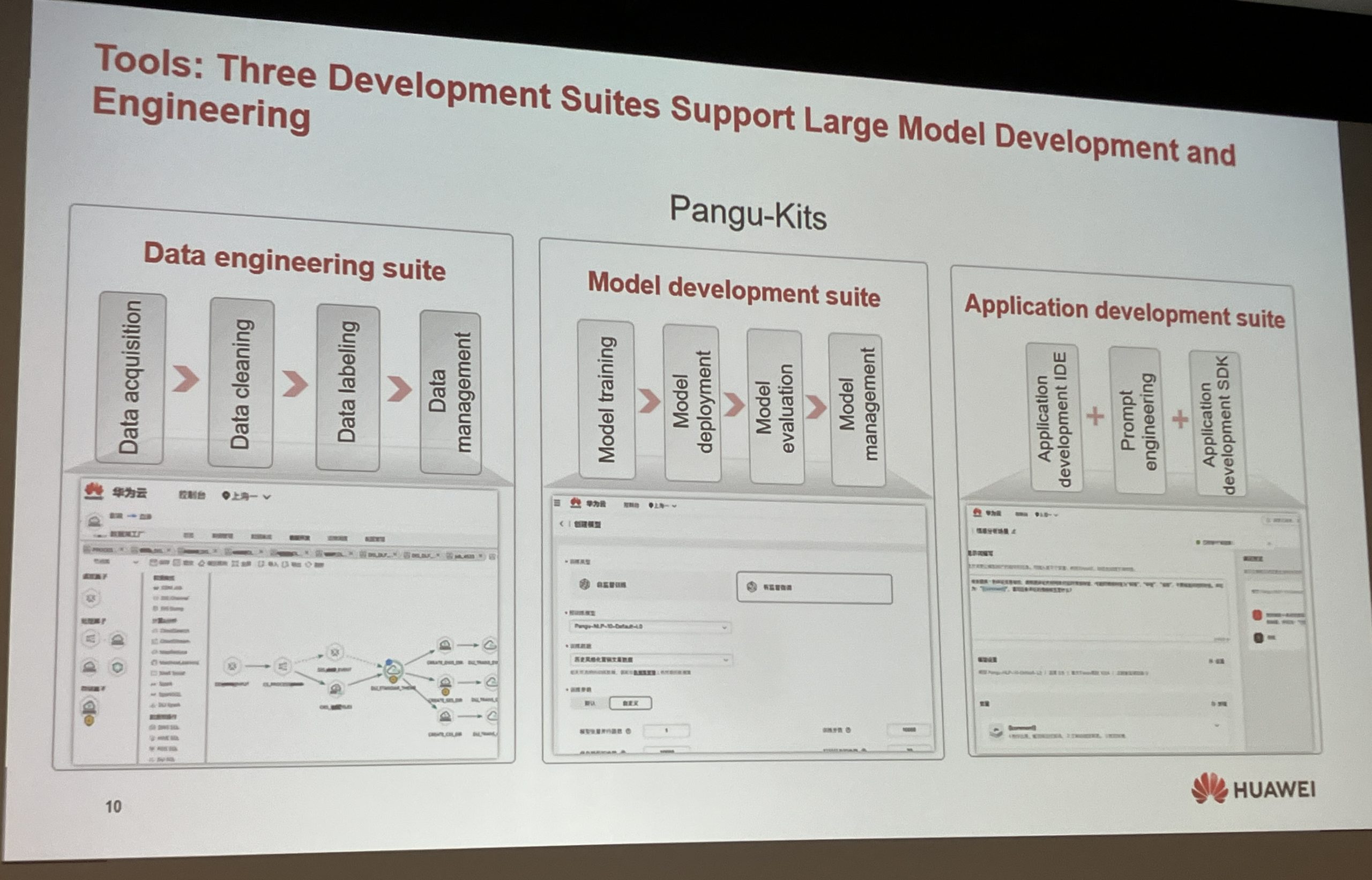
However, there are also off the shelf intelligence capabilities for those that don’t want to develop from scratch. Or for non-core operations. Pangu (and others) can also be purchased by Model as a Service.

For those that want to build in-house and create customized capabilities, here are the details. These are worth going through in detail.
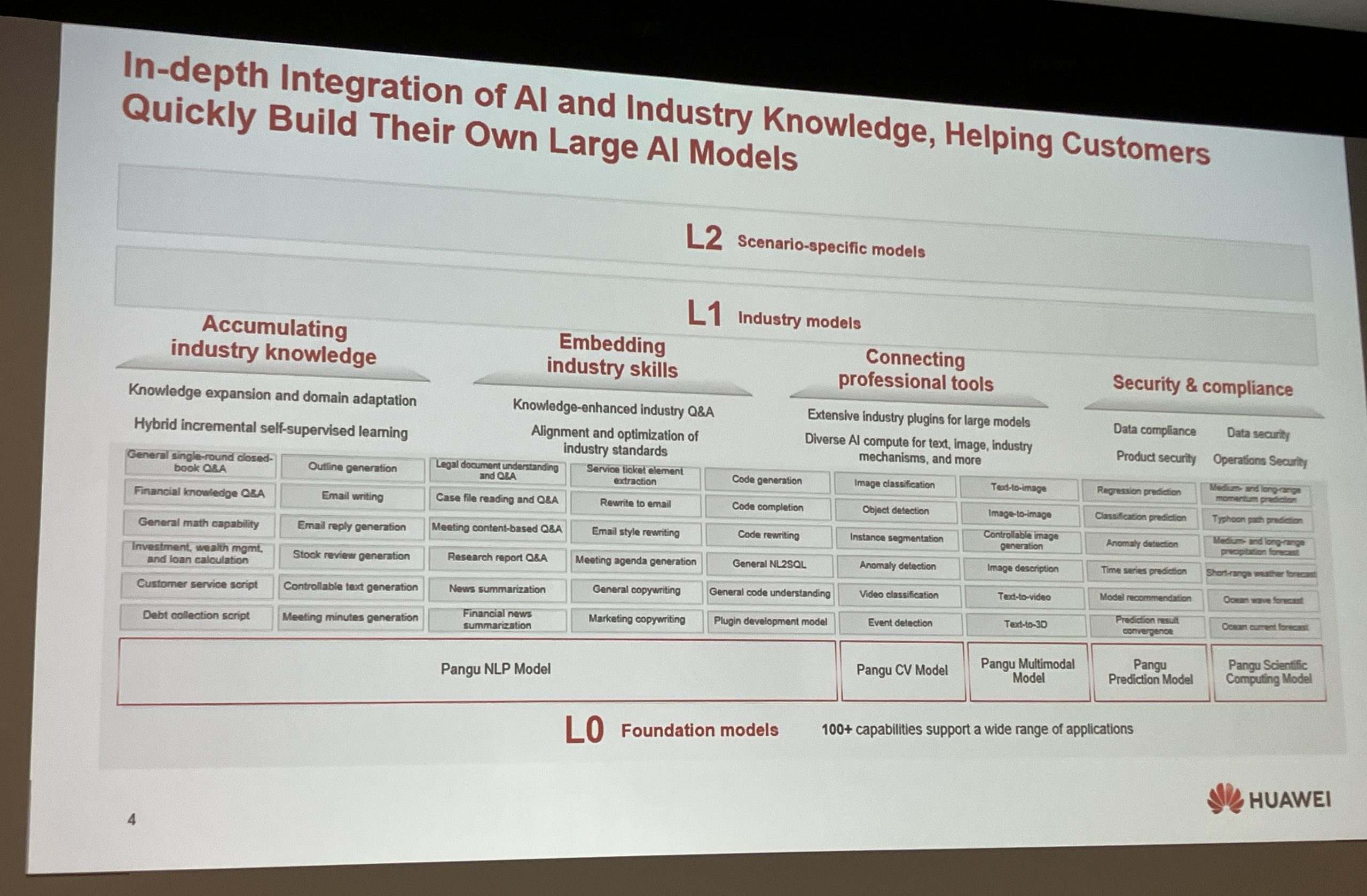
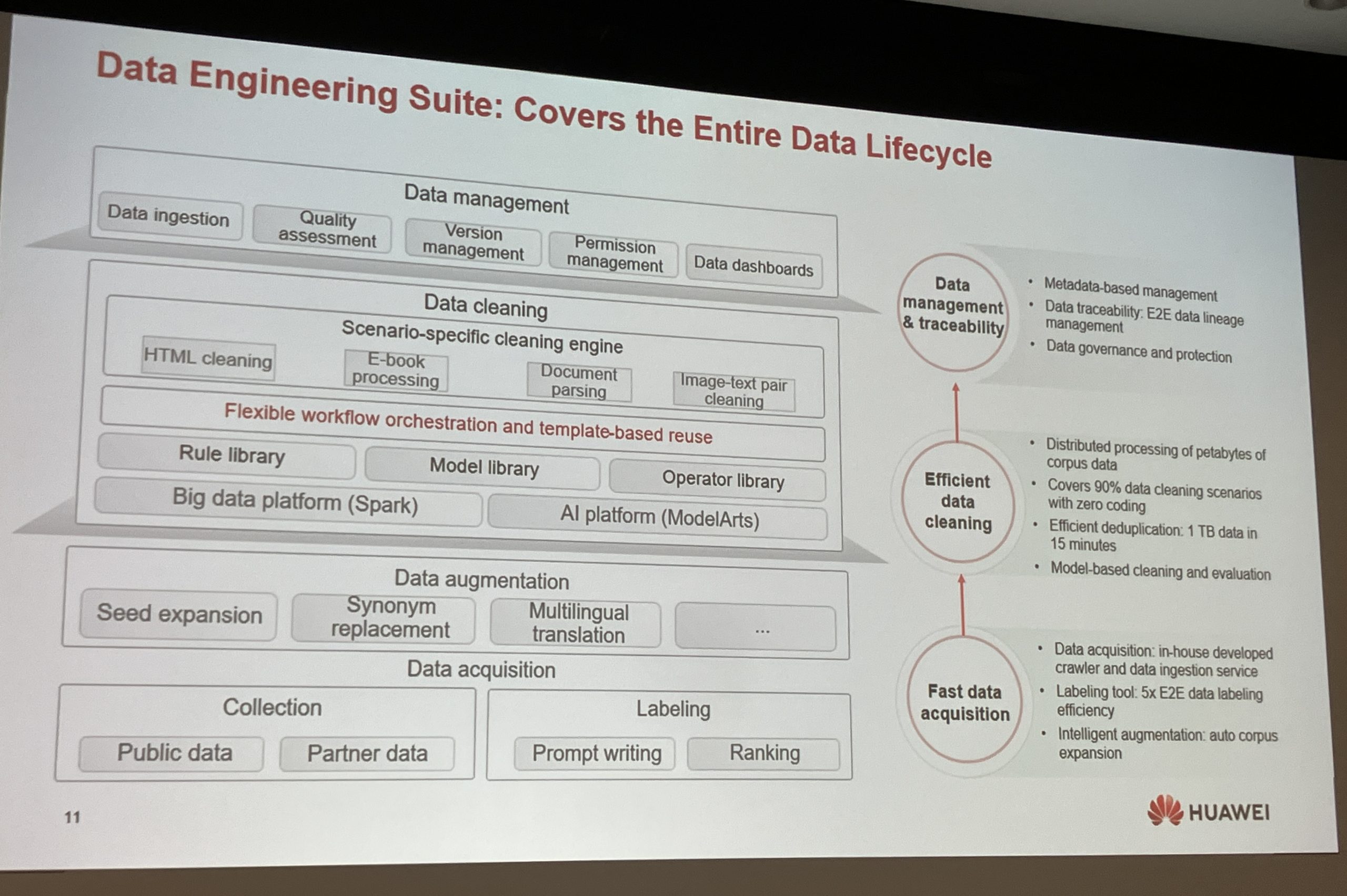


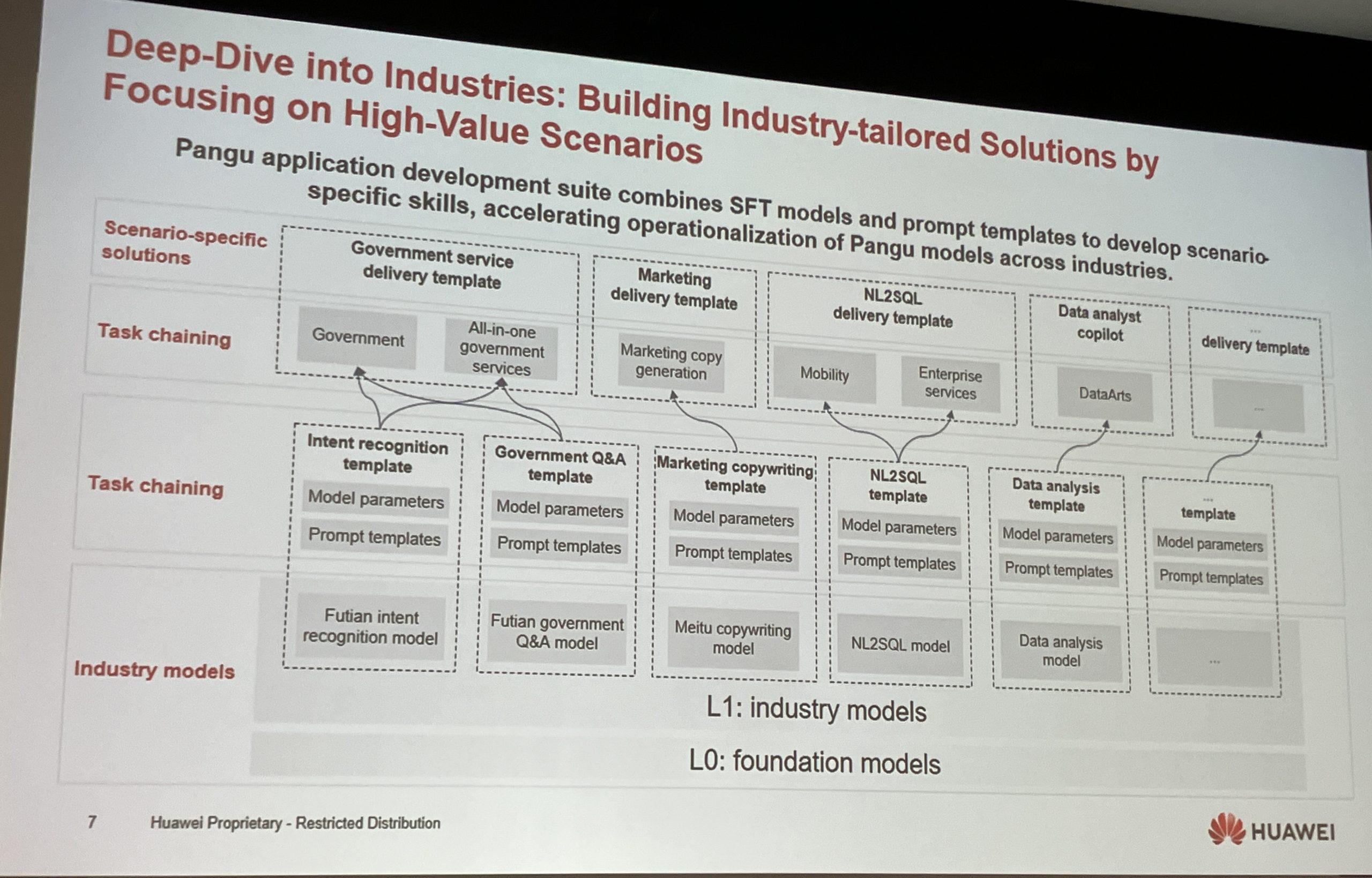
Final Point: The Intelligent Transformation of Industries Is a Long Road
That is all pretty cool. I think we are getting a good, detailed look at what the tech stack of most businesses is going to look like in the future. It will be a combination of software and intelligence capabilities.
However, in practice the tech stack and its tools are 49% of this. The other 51% are the people and businesses doing the hard work of transforming their factories, workflows, and ultimately entire industries. This is a huge undertaking that is going to take a long time. So that means consultants. Lots of support from vendors. And so on.
Within this digital and AI transformation wave, Huawei is focused on integrated, end-to-end solutions. Everything from edge devices to connectivity to cloud intelligence. That is different than isolated offerings by cloud providers like AWS. David mentioned finance, government, manufacturing, electric power, and railways specifically as industries they are focused on.
***
That’s it for Part 2. In Part 3, I’ll go into some successful transformation cases. Such as Haier, Meitu, China West Airport Group and others.
Cheers, Jeff
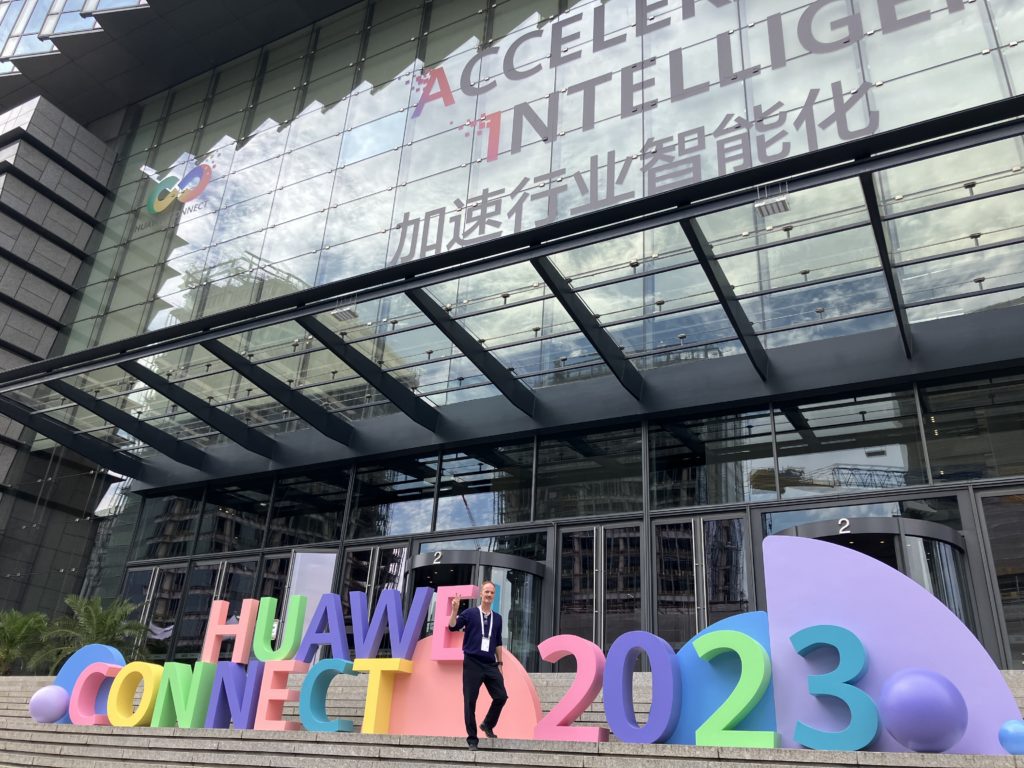
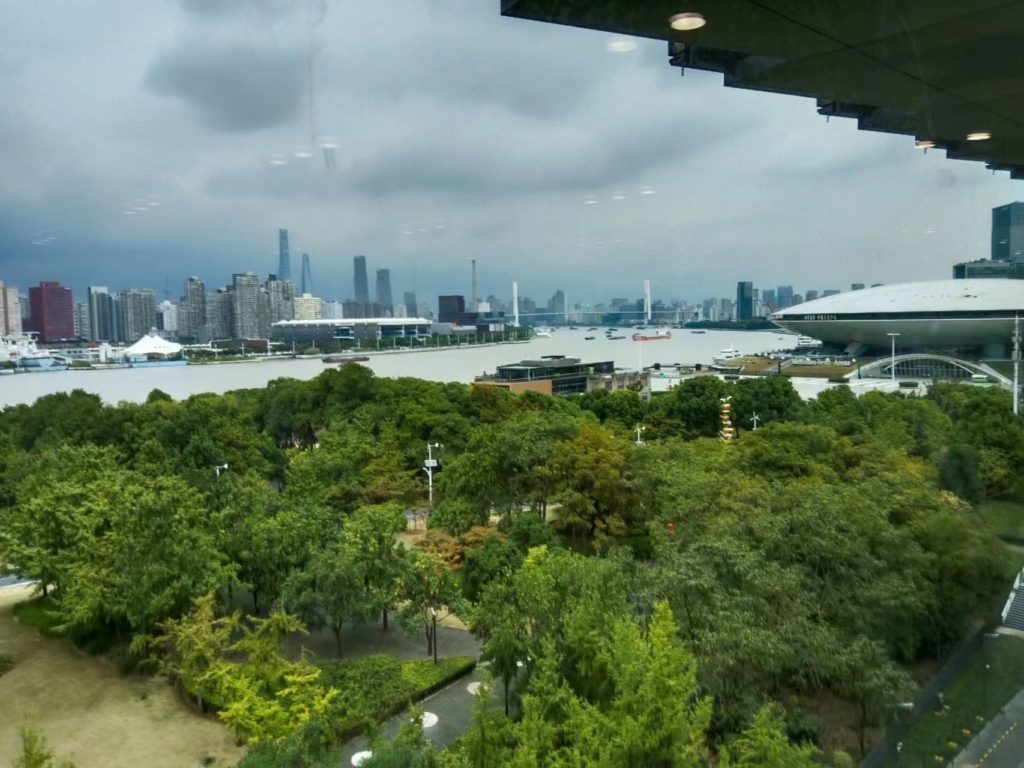
———–
Related articles:
- What TikTok Can Learn From Huawei About the Role of the State (Jeff’s Asia Tech Class – Podcast 39)
- How Tsingtao, CR Snow and the Other Beer SOEs Won Big in China (Pt 2 of 2)
From the Concept Library, concepts for this article are:
- Artificial Intelligence / Generative AI
- Cloud Services
- Digital and AI Transformation
From the Company Library, companies for this article are:
- Huawei: Pangu
———-
I write, speak and consult about how to win (and not lose) in digital strategy and transformation.
I am the founder of TechMoat Consulting, a boutique consulting firm that helps retailers, brands, and technology companies exploit digital change to grow faster, innovate better and build digital moats. Get in touch here.
My book series Moats and Marathons is one-of-a-kind framework for building and measuring competitive advantages in digital businesses.
This content (articles, podcasts, website info) is not investment, legal or tax advice. The information and opinions from me and any guests may be incorrect. The numbers and information may be wrong. The views expressed may no longer be relevant or accurate. This is not investment advice. Investing is risky. Do your own research.
